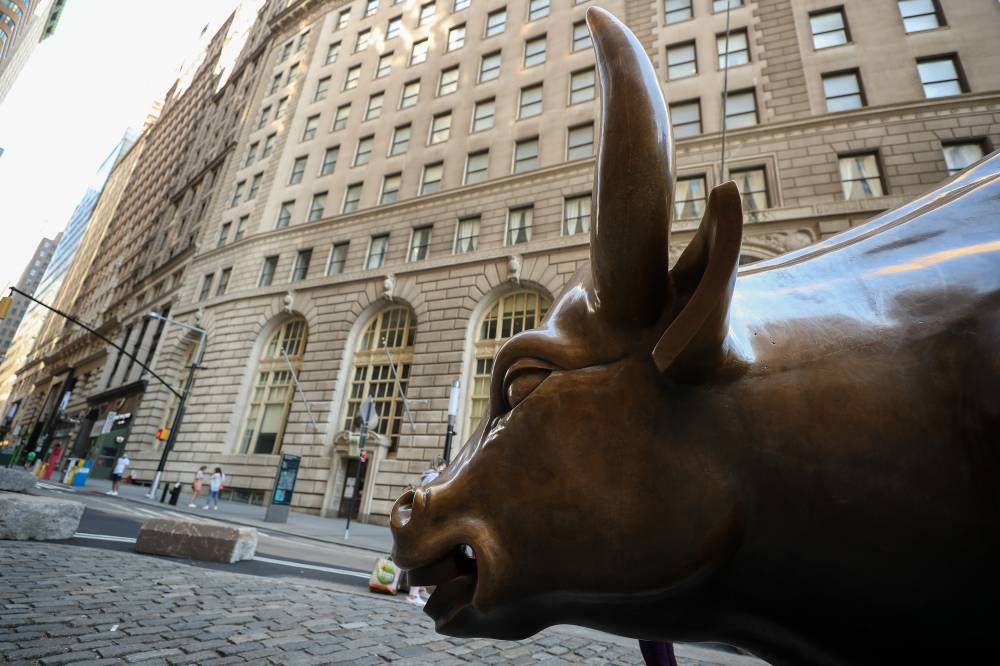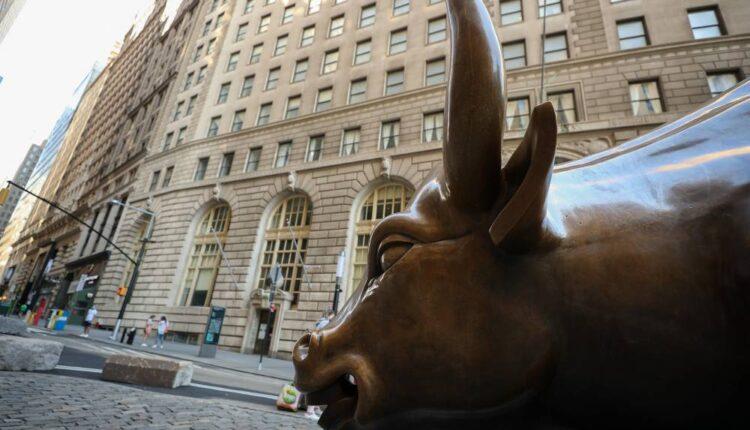
- Friday's rally pulled the S&P 500 just about even for the year. Including dividends, the market's total return for 2020 is positive.
- The improvement in economic indicators from quite-depressed levels has made the stock market's dramatic surge off the March 23 lows seem a bit less disconnected from the economic fundamentals.
- But after this ripping rally, is the market catching up to reality, or running ahead of it?
- The S&P 500 relative strength index, a measure of the magnitude and persistence of a trend, breached the 70 level Friday, and it rarely gets too far above that.
A "Now Hiring" sign advertising jobs at Lowe's is seen as the spread of the coronavirus disease (COVID-19) continues, in Homestead, Florida, U.S., April 17, 2020.Marco Bello | Reuters
Quite unexpectedly and rather suddenly, investors have been given a reset, a reprieve, a chance at a fresh start. What should they do with it?
The furious stock-market rally, already the best-ever over 50 trading days through Tuesday, on Friday pulled the S&P 500 just about even for the year. Including dividends, the index has made you money in 2020, after a 37% collapse, a global pandemic and in a still-constrained economy.
Zoom In IconArrows pointing outwards
With Friday's burst higher on a far better-than-expected May jobs report, traders rushed to grab more exposure to the recovery scenario, which meant selling Treasury bonds and buying cheaper cyclical stocks that had been the main victims of the lockdown economy.
It brings us to a key "Now what?" moment. Is the market right in accelerating the recovery timeline? Are stocks — which have fed off a deep store of investor skepticism — getting ahead of themselves now that more believe the economy is solidly on the mend?
The closing of many gaps
The ramp in equity indexes has narrowed many real and perceived divides that grew quite wide since the Covid crisis hit.
The improvement in economic indicators from quite-depressed levels has made the stock market's dramatic surge off the March 23 lows seem a bit less disconnected from the economic fundamentals. Equities always attempt to run ahead of the data, they care more about the direction of change rather than the level of activity, and always climb a wall of worry.
Now, after a 45% rally and a bit more belief that the country is simply moving fast to reopen – whatever the consequences – the widely cited "disconnect" between Wall Street and Main Street appears less confounding.
Other gaps that have closed rapidly: Between stocks and bonds, U.S. indexes and global markets, and the growth and value sectors of the market.
Treasury yields sped higher last week, the 10-year surpassing 0.9% for the first time in two-and-a-half months. The MSCI All-Country World Index Ex-U.S. is up 15% in the past month against 11% for the S&P 500.
And the historic gap between steadier growth stocks and more cyclical value groups has been reduced sharply, though over the past year the Russell 1000 Growth index still has a 25 percentage-point lead over the Russell 1000 Value.
Combined with a powerful demand for corporate credit that has lowered the cost of capital and reloaded company balance sheets, these trends show a global market clicking into gear pricing in an economic revival.
Too much of a good thing?
It's been a powerful bullish weather system for stocks: Momentum toward an ambitious reopening, pent-up consumer demand, the mass abandonment of economically sensitive stocks, tremendous global stimulus and rampant investor anxiety at a moment when the bearish case on an infection spike and long-term consumer caution simply cannot be proven correct for months.
But now, after this ripping rally, is the market catching up to reality, or running ahead of it?
The tape is certainly starting to run pretty hot. The S&P 500 relative strength index, a measure of the magnitude and persistence of a trend, breached the 70 level Friday, and it rarely gets too far above that.
Source: FactSet
As the chart makes clear, rallies can continue after RSI exceeds 70, but in many cases the gains added after have a tendency to be reversed, largely or entirely, before terribly long.
It's a similar story with the ratio of call to put options, which last week made a multi-year low as demand for downside protection evaporated relative to the thirst for upside bets.
On Thursday, Nasdaq volume was an all-time record, which hints at an increasingly fevered chase and potentially an ongoing capitulation by bearish traders.
A reading on the equity exposure of tactical investment advisors in the National Association of Active Investment Managers, who run client money in discretionary strategies, rushed to the upper end of its typical range last week.
These positioning clues say the pros are fully in rally-riding mode and have quit fighting either the friendly Fed or the ebullient tape.
Much is being made of the budding frenzy in small stay-at-home traders using Robinhood or other zero-commission brokers and flocking to some of the more speculative, fastest-moving stocks. Of the ten stocks that gained the most popularity among Robinhood clients in the past week, four were airlines.
Yet it's fair to say wealthy individuals and more traditional fund managers have been more reserved. Money continues flowing out of equity funds in a stream and into bond funds in a torrent. The wall of worry is certainly shorter, and the tailwind from defensive positioning has diminished. But neither is quite gone entirely.
The big pop in stocks after a payrolls report, such as we saw Friday, has a mixed record as predictor of continuing market strength. Bespoke Investment Group says it's among the ten best post-payrolls upside index pops. Of the nine other instances, both a week and a month later the S&P was down three of nine times. The average gain from the jobs Friday open was 0.8% a week later and 2.3% a month later. The S&P opened Friday at 3163, closing about 1% above that.
Bank of America global strategist Michael Hartnett has correctly been bullish risk assets in recent months, based in part on his Bull-Bear Indicator of sentiment and flows being pinned at zero. This gauge lifted slightly above zero by Thursday. Of the prior five times it rose from zero since 2002, the S&P on average added 2.8% the next four weeks and 4.8% over eight weeks. Yet over 12 weeks, two instances saw mid-single-digit losses.
For his part, writing before Friday's data and market move, he predicted a run by the S&P 500 to 3250 but recommended selling it. The index's high Friday was 3211.
That's as logical a level as any for stocks to flatten out or spill back a bit on a possible reassessment of risk exposures and just what "back to normal" might look like, and when.
But it's worth remembering that many of the same characteristics that suggest this rally is getting overheated in the short term are also ones that tend only to appear in durable longer-term advances.
Subscribe to CNBC PRO for exclusive insights and analysis, and live business day programming from around the world.
Source: cnbc.com

